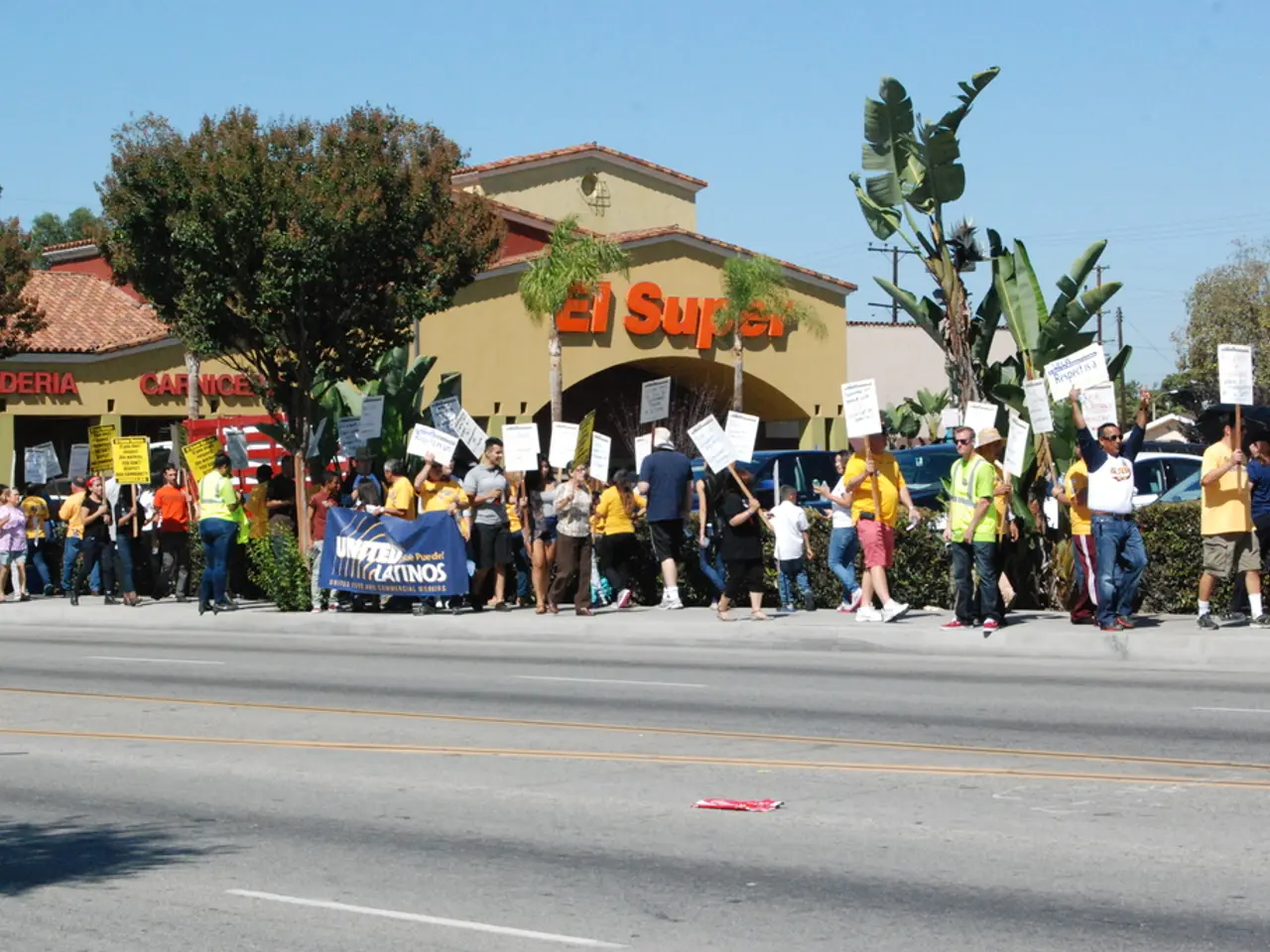Assessing Advancements and Consequences of Allied Efforts
Evaluating Community Coalitions: A Comprehensive Approach
Community coalitions play a crucial role in driving change and addressing complex issues. To ensure their effectiveness, it's essential to evaluate these coalitions regularly. Here's a breakdown of common methods and tools used for evaluating coalition processes at different stages.
First Level Evaluation: Assessing Coalition Functioning
At the initial stage, the focus is on assessing the coalition's functioning, reach, and impact. Key methods include:
- Qualitative Data Collection: Semi-structured interviews and focus group discussions (FGDs) with coalition members and stakeholders provide rich insights into coalition processes, barriers, and facilitators.
- Ripple Effects Mapping (REM): A participatory visual method to map intended and unintended impacts, allowing stakeholders to see how coalition activities influence outcomes and grow over time.
- Thematic Analysis and Qualitative Software: Transcribing interviews verbatim, coding data by themes, and categorizing factors that enable or inhibit coalition success, often performed using tools such as MAXQDA.
- Process Evaluation Frameworks: Utilizing frameworks like RE-AIM or logic models to structure what aspects of coalition processes to assess (engagement, implementation fidelity, communication).
- Stakeholder and Community Engagement: Techniques like breakout sessions and small group discussions encourage reflection on coalition development and leadership skills within coalition members themselves.
These methods help capture how coalitions operate internally, their effectiveness in collaboration, and participants’ perceptions regarding coalition impacts.
Second Level Evaluation: Evaluating Specific Objectives
The second level of evaluation asks whether specific program objectives were met by the coalition and whether the programs were carried out as intended. This level involves gathering data from community members who were affected by the coalition's activities to assess the coalition's impact.
Third Level Evaluation: Big-Picture Evaluation
The third level of evaluation is a big-picture evaluation of what the coalition has accomplished. Common methods for this stage include surveys, interviews, and document review. This level helps identify the coalition's overall impact on the community.
Resources for Evaluation
Various resources are available for coalition evaluation. The University of Wisconsin-Extension provides Logic Model templates and examples for program development and evaluation. The University of Kansas offers toolkits on partnership building and community change. elearn.sophe.org/coalition-building-resources offers a variety of coalition assessment tools. Technical assistance for evaluation can be obtained from local Extension offices, local health departments, and other local nonprofit organizations.
Building Evaluation into Program Planning
To ensure adequate resources for evaluation, it's essential to build evaluation activities into the coalition's program planning process. This can help identify quick wins and successes that boost member commitment and coalition credibility.
Overcoming Challenges
Insufficient funding for evaluation is a common issue, as funds are often prioritized for intervention rather than evaluation. Building evaluation into the coalition's budget from the outset can help address this challenge.
In summary, evaluating community coalitions is a vital process that helps ensure the coalition's effectiveness, provides accountability, informs policy decisions, and increases community awareness and support. By using a combination of qualitative and quantitative methods, coalitions can gain a comprehensive understanding of their impact and make data-driven decisions to improve their work.
- Community coalitions can drive change in rural development and community development, addressing issues like science and technology, sleep hygiene, and workplace wellness.
- Evaluating the coalition's functioning is crucial to identify medical conditions, chronic diseases, and cancers that might be prevalent within the community.
- Respiratory conditions, digestive health, and eye health are essential factors to consider when assessing the coalition's reach and impact on health and wellness.
- Fitness and exercise, sexual health, and autoimmune disorders are areas where the coalition's programs can have a significant impact on communities.
- Mental health, men's health, and women's health are crucial aspects of any community's well-being that the coalition should focus on.
- Skin care, therapies, and treatments, nutrition, and aging are essential elements that the coalition should consider when addressing health and wellness in the community.
- Parenting and weight management are important areas where the coalition can provide support for families within the community.
- Cardiovascular health, medicare, and cbd are additional health concerns where the coalition can make a difference for individuals within the community.
- Neurological disorders, skin conditions, and education and self-development are vital areas of concern and focus for coalition work.
- Personal growth, career development, job search, and learning are useful skills that the coalition can help community members to acquire.
- Skills training in areas such as digital literacy, financial management, and communication can lead to better opportunities for community members.
- Identifying the impact of the coalition's work on the community's health and well-being can help to address neurological disorders, chronic diseases, and other medical conditions more effectively.
- By evaluating the coalition's programs and activities, it is possible to make data-driven decisions about the coalition's focus areas and strategic direction.
- Building evaluation into the coalition's budget and program planning process can help to overcome challenges such as insufficient funding for evaluation.
- A comprehensive approach to evaluating community coalitions can lead to better outcomes for individuals and the community as a whole and contribute to the overall goal of improving quality of life.
- By fostering a culture of evaluation within the coalition, members can continuously learn and improve their work, leading to greater impact and success.
- Collaborations with local organizations, schools, and businesses can help to leverage resources and support for the coalition's work, including funding, expertise, and reach.
- By partnering with stakeholders and community members, the coalition can identify their priorities, concerns, and needs, ensuring that the coalition's work is relevant and meaningful to the community it serves.




